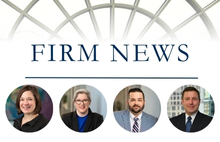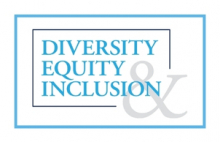What Does Discrimination Based on “Sex” Really Mean?
July 27, 2015Employers' Obligations under Title VII to Lesbian, Gay, Bisexual, and Transgender Employees
Title VII of the Civil Rights Act of 1964 prohibits an employer from discriminating against an employee based upon his or her sex. What Congress intended by the phrase, "because of . . . sex" is an evolving area of the law as it relates to lesbian, gay, bi-sexual and transgender employees.
Gender Identity and Title VII
The current trend in LGBT discrimination law began in 2012, when the federal agency in charge of enforcing Title VII, the Equal Employment Opportunity Commission ("EEOC"), first ruled that transgender employees are protected from workplace discrimination on that basis. Since then, several courts have followed suit. Transgender protection under Title VII had its origins in the Supreme Court's 1989 decision in Price Waterhouse v. Hopkins. In that case, the Supreme Court held that Title VII barred not just discrimination because of sex, but also gender stereotyping, i.e. failing to act and appear according to expectations defined by gender. Price Waterhouse involved a female employee who was told she would not be partnership material unless she acted more like a woman by walking, talking and dressing more femininely. The Supreme Court ruled in favor of the plaintiff, concluding that discrimination for failing to conform to gender-based expectations violates Title VII.
In light of Price Waterhouse, courts have recognized a sex stereotyping theory as a valid method of establishing discrimination against transgender individuals in violation of Title VII. For example, one court reasoned that after Price Waterhouse, an employer who discriminates against a man because he wears dresses or makeup or acts femininely is engaging in sex discrimination because the discrimination would not occur but for the individual's sex.
Most recently, in April 2015, the EEOC ruled that the U.S. Army discriminated against a transgender woman by not allowing her to use the women's restroom. The EEOC ruled that a transgender employee cannot be denied access to commonplace restrooms used by other employees of the same gender identity, regardless of whether the employee had a medical procedure and without regard to coworkers' negative reactions. A month after the EEOC's ruling, the Occupational Safety and Health Administration issued similar guidance on transgender employees' restroom use. Additionally, within the last year, the EEOC has filed several lawsuits claiming transgender discrimination under Title VII, the most recent in June 2015.
EEOC Says Sexual Orientation Discrimination Violates Title VII
Now the EEOC has gone further. In a landmark July 16, 2015 ruling, the EEOC held that Title VII's prohibition on discrimination "because of . . . sex" included sexual orientation. Expanding upon Price Waterhouse and sex stereotyping jurisprudence, the EEOC concluded that sexual orientation as a concept cannot be defined or understood without reference to sex. Therefore, the EEOC will now treat claims of sexual orientation discrimination as complaints of sex discrimination under Title VII.
In its ruling, the EEOC describes the link between sexual orientation and sex in three ways:
- Sexual orientation discrimination is sex discrimination because it necessarily entails treating an employee less favorably because of the employee's sex (e.g. a lesbian employee is suspended for displaying a photo of her female spouse on her desk but a male employee is not suspended for displaying a photo of his female spouse on his desk);
- Sexual orientation discrimination is sex discrimination because it is associational discrimination based on sex (e.g. a gay man is discriminated against by his employer because he associated with or dated men); and
- Sexual orientation discrimination is sex discrimination because it necessarily involves discrimination based on gender stereotypes (e.g. an employee is treated adversely because he or she is viewed, based on appearance, mannerisms or conduct, as insufficiently masculine or feminine).
Effect of the EEOC's Rulings
The EEOC's rulings form that agency's interpretation of the term "sex" as used in Title VII. Their rulings do not have the effect of amending Title VII to explicitly include protections for LGBT individuals. Federal lawmakers have not passed explicit civil rights protections for LGBT employees, though legislation to do just that has been introduced many times before. Whether federal courts across the country will follow the EEOC's rulings on sexual orientation discrimination is unclear. Some, as cited in the EEOC's ruling, have already reached the same conclusion. But as of this writing, federal courts and state courts in states that do not have laws preventing sexual orientation discrimination have not taken a uniform position on the scope of protection for LGBT persons under existing discrimination laws.
The most immediate impact of the EEOC's position is likely to be an increase in discrimination charges alleging sexual orientation discrimination. Whereas such charges used to be dismissed outright, they will now be fully investigated like any other class of discrimination. It remains to be seen how such claims will fare once the charging parties are issued right to sue letters and file claims in federal court. The EEOC's action strongly suggests that an answer will come sooner rather than later. Another possible consequence of the EEOC's ruling may be that state agencies (in states that do not have laws explicitly prohibiting sexual orientation discrimination) may be more likely to interpret their discrimination laws as prohibiting sexual orientation discrimination as well.








